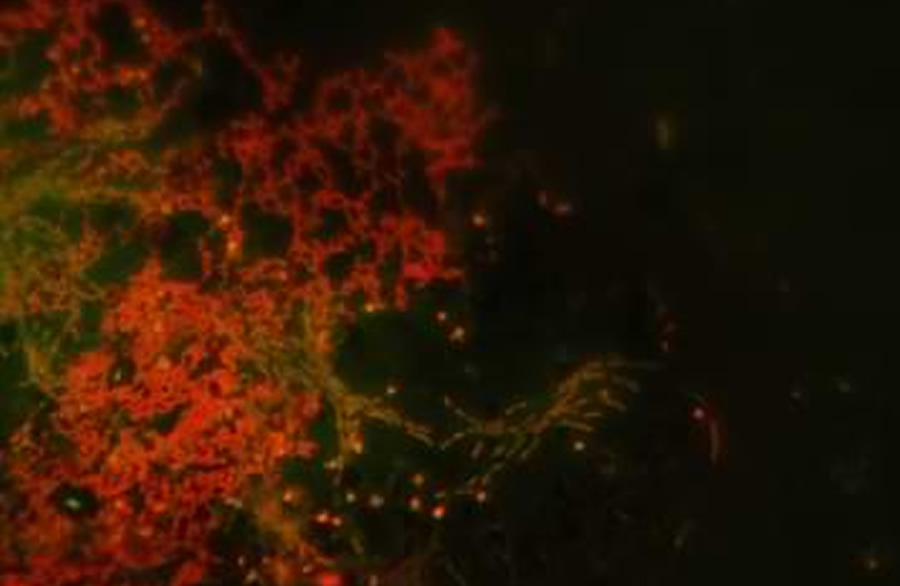
Menthol-fatty acids eutectic systems as anti-bacterial agents and wound healing enhancers
A composition of menthol: fatty acids, in the appropriate molar ratio to form a deep eutectic system, presenting antibacterial properties.
BACKGROUND
Bacterial infections are one of the major problems in wound healing. The market is looking for solutions that avoid the use of antibiotics and are seeking for natural solution to prevent bacterial biofilm adhesion. Furthermore, if associated to these benefits the systems are able to promote wound healing this is surely a competitive advantage. Herein, the solution proposed is a therapeutic deep eutectic system (THEDES) based on menthol and fatty acids. Menthol is a terpene that can been extracted from Mentha species and it has been already used for THEDES preparation in combination with a wide range of compounds including ibuprofen, lidocaine, fluconazole, captopril, among others. In this work, it was mostly used due to their effectiveness as permeation enhancer together with their well-known anti-inflammatory and antimicrobial properties. On the other side, fatty acids are commonly extracted from vegetal and animal fats and their potent antimicrobial properties have been extensively reported, including their important role on the self-disinfection of the human skin, as they are secreted from sebaceous glands. The combination of menthol and fatty acids in a deep eutectic system has not been referred previously.
This innovative solution is a composition of menthol:fatty acids, in the appropriate molar ratio to form a deep eutectic system. Particularly we have designed new systems of menthol:lauric acid; menthol:myristic acid and menthol:stearic acid. The systems have proven to behave a single entity, distinct from that of the pure components that constitute the mixture. Menthol:fatty acid eutectic systems present antibacterial properties and have demonstrated to enhance wound healing, when compared to the pure components. Furthermore, the cell viability is not compromised when in contact with these formulations.
TECHNOLOGY OVERVIEW
This invention is a combination of menthol with fatty acids, in their eutectic compostion, i.e., in an adequate molar ratio at which the systems become liquid at room temperature. The composition revealed an enhanced performance for wound healing while being non-cytotoxic and presenting antibacterial properties. The evaluation of their biological performance was performed towards bacteria and HaCaT cells. Among the different formulations of THEDES, the one based on menthol and SA, establishes stronger hydrogen bonding interactions, being also the most promising formulation as did not elicit any relevant cytotoxicity, and potentiate wound healing while presenting antibacterial properties.
The biological ability of these THEDES based on fatty acids was performed in vitro against a wide panel of microorganisms, showing promising results against clinically relevant gram-positive bacteria such as Methicillin-resistant Staphylococcus aureus and Staphylococcus epidermis, both prominent pathogens in hospital-acquired (nosocomial) infections, due to their increased resistance to currently applied antibiotics. The minimum inhibitory concentration (MIC) and minimum bactericidal concentration (MBC) was determined for all the formulations and the screening of cytotoxicity was performed using the same concentration. The cytotoxicity tests were performed by a colorimetric assay with indirect contact (MTS assays) using THEDES at different concentrations. In combination the results clearly demonstrate that DES based on menthol and fatty acids holds great promise as antimicrobial agents for preventive and therapeutic applications. Furthermore, THEDES based on menthol:SA are also potential candidates for the preparation of wound dressings, promoting wound closure in relation to a blank control.
FURTHER DETAILS
Unpublished details of the project, including new data, is undisclosed to date but the University would be more than happy to discuss with interested parties under an NDA.
STAGE OF DEVELOPMENT
TRL 3 – analytical and experimental critical function and/or characteristic proof of concept.
BENEFITS
- Non-cytotoxic;
- Anti-bacterial – Complete biofilm detachment after max. 15 min. for MRSA; E. coli and C. albicans;
- Wound healing agent – enhancement over 40% in comparison with control.
APPLICATIONS
- Wound dressing applications/gauzes loading;
- This technology has the potential to provide the basis for new antimicrobial therapeutics, or material / device surface treatments.
OPPORTUNITY
Available for codevelopment with industry.
INTELLECTUAL PROPERTY
- WO2020174340
- Know-how based.
NOVA Inventors
Ana Rita Duarte
Joana Marques Silva
Carolina Velhinho Pereira
Francisca Marques Mano
Alexandre Paiva
Ana Alexandra Matias


